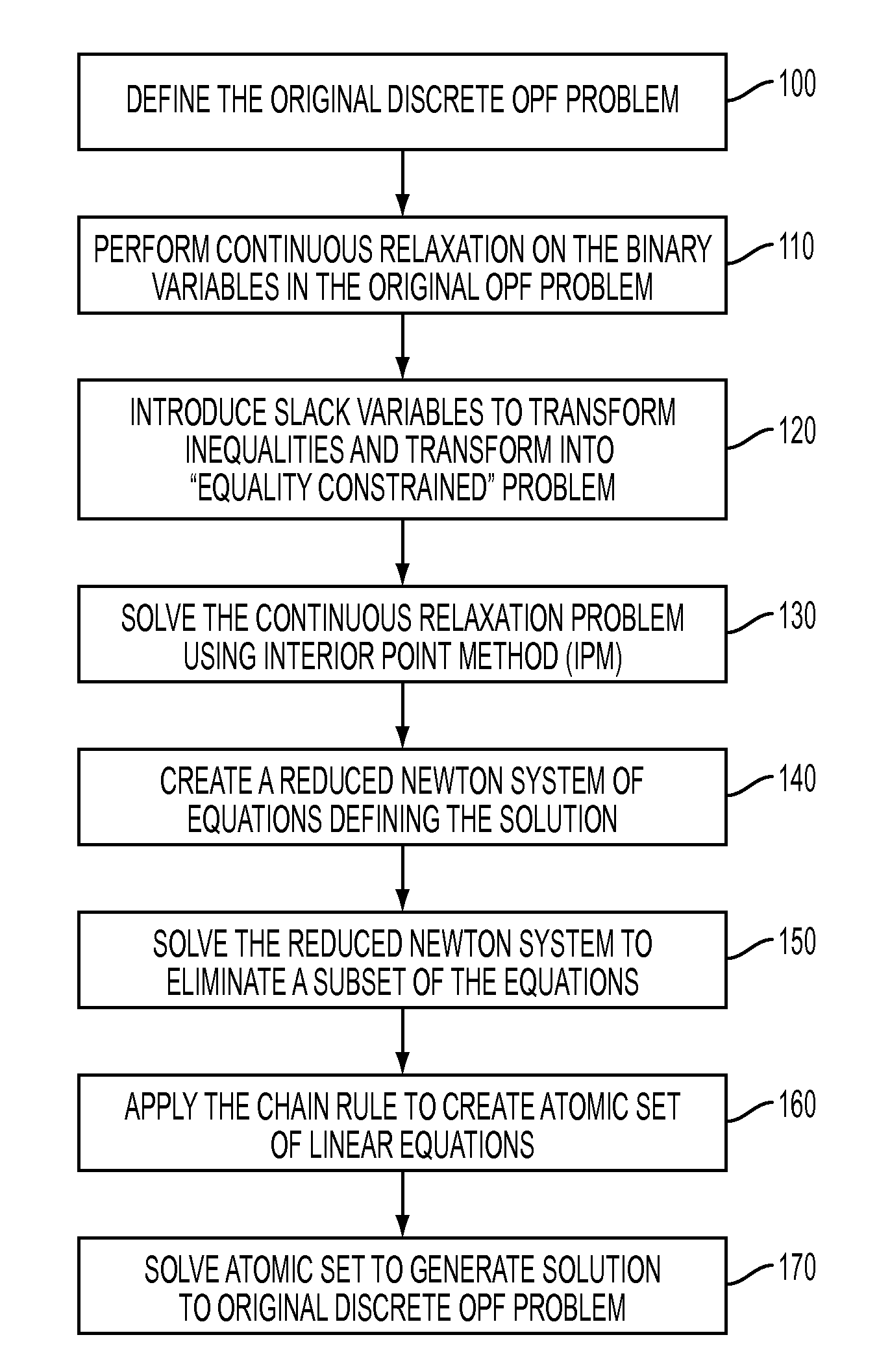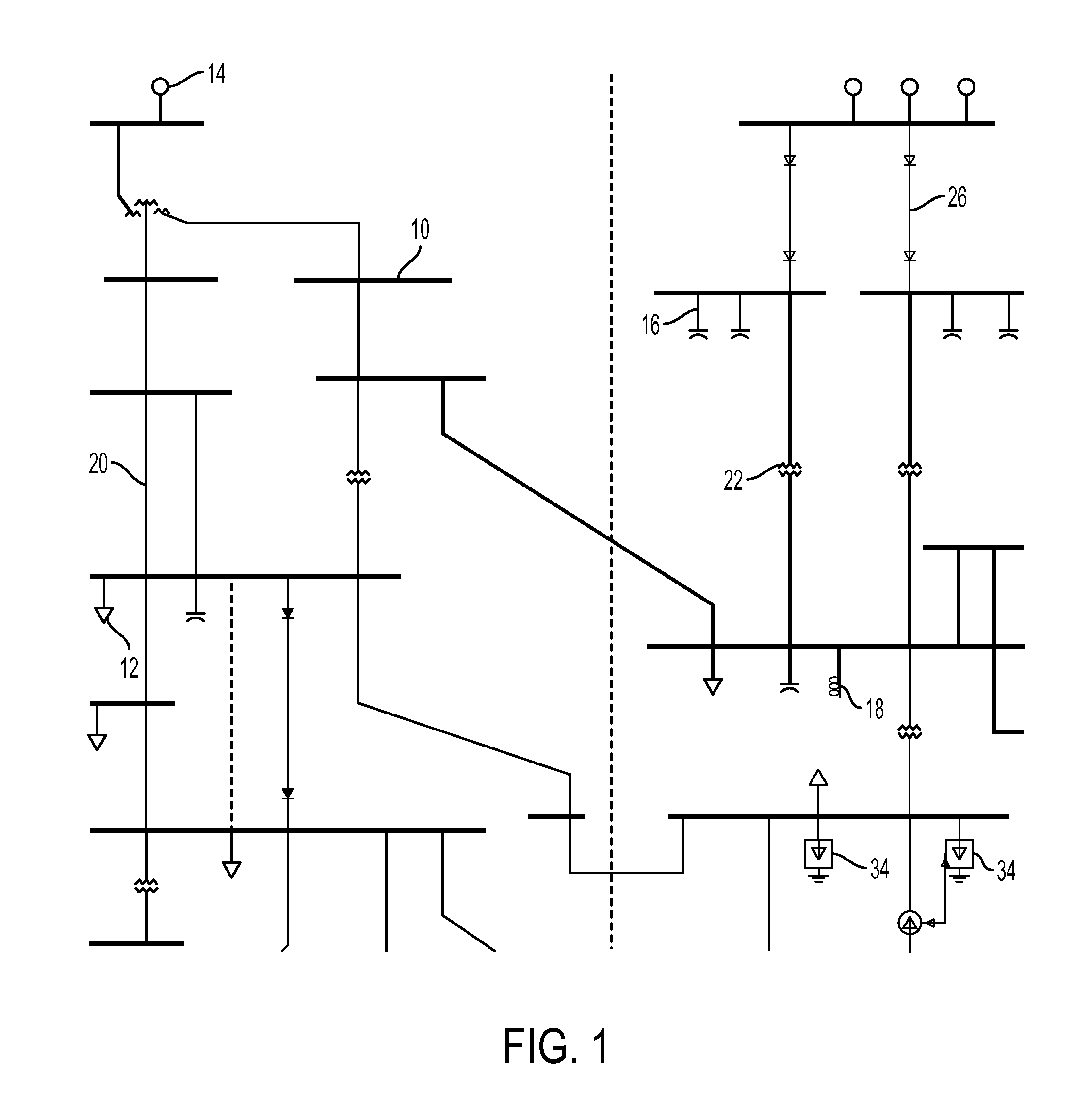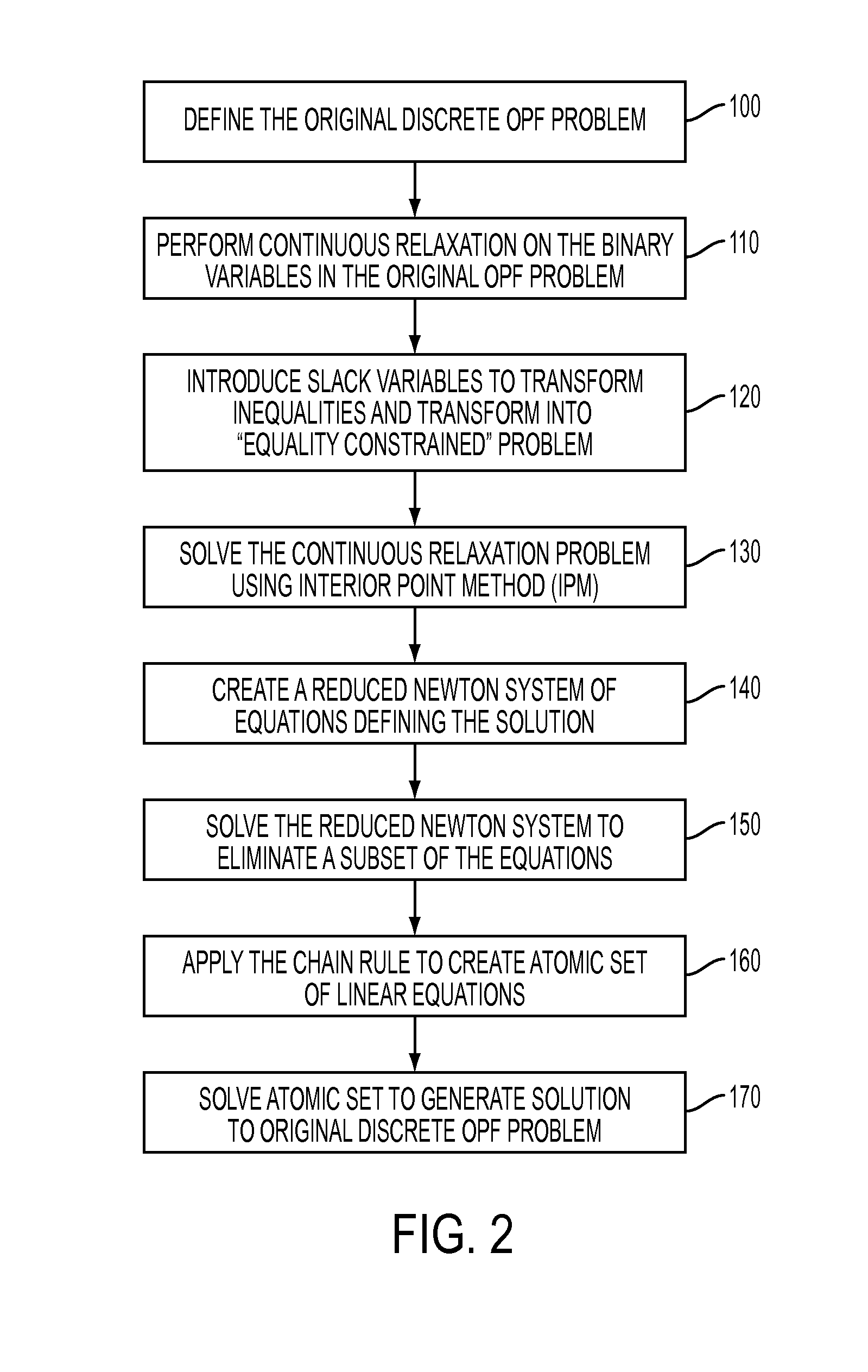Primal-dual interior point methods for solving discrete optimal power flow problems implementing a chain rule technique for improved efficiency
a technology of discrete optimal power flow and chain rule, applied in the integration of power network operation systems, instruments, computation using non-denominational number representations, etc., can solve the problems of reducing the reliability of electricity supply, transmission and distribution systems worldwide to their limits of reliable operation, and the expected continuation of transmission congestion, so as to simplify the analysis and resolution of network-based opf problems
- Summary
- Abstract
- Description
- Claims
- Application Information
AI Technical Summary
Benefits of technology
Problems solved by technology
Method used
Image
Examples
Embodiment Construction
[0016]While the general subject of Optimal Power Flow (OPF) in relation to power system planning, operating and control has been the subject of study for decades, a continuing stumbling block has been the need to evaluate the solution as a mixed integer problem, requiring the use of different types of analyses at different times, including viewing the non-convex variables (such as “voltage law”) as a quadratic. By virtue of performing a convexification on these variables in accordance with the present invention, it is now possible to reformulate the OPF problem with discrete parameters, opening up the possibility to utilize solution approaches heretofore unavailable.
[0017]As mentioned above, the base case OPF problem seeks to produce an optimum power flow solution that balances generation and consumption for all buses within a power distribution system—across all connected branches—such that the overall system state (as measured by the underlying physical parameters such as voltages...
PUM
 Login to View More
Login to View More Abstract
Description
Claims
Application Information
 Login to View More
Login to View More - R&D
- Intellectual Property
- Life Sciences
- Materials
- Tech Scout
- Unparalleled Data Quality
- Higher Quality Content
- 60% Fewer Hallucinations
Browse by: Latest US Patents, China's latest patents, Technical Efficacy Thesaurus, Application Domain, Technology Topic, Popular Technical Reports.
© 2025 PatSnap. All rights reserved.Legal|Privacy policy|Modern Slavery Act Transparency Statement|Sitemap|About US| Contact US: help@patsnap.com



